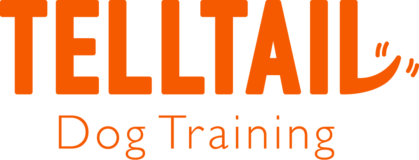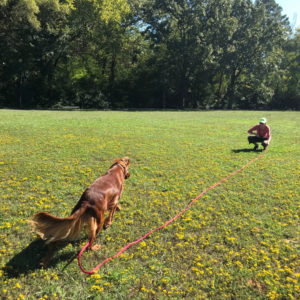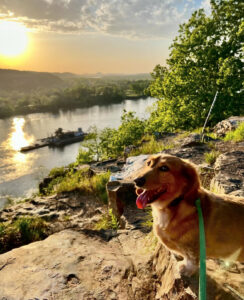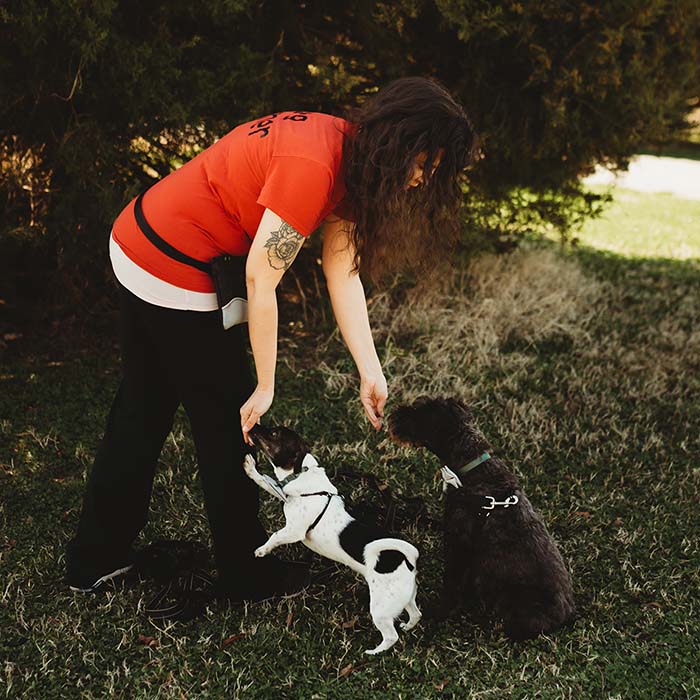Training Methodologies
Projection, practice, and patience
“Maybe,” she said with a shrug.
It wasn’t a dismissive shrug or a patronizing shrug, I realized as I stood in her farmhouse kitchen, where I was trying to figure out a definitive answer to the cause of a behavioral problem.
Nicole Skeehan owns Philly Unleashed, a dog training company based in Philadelphia and southern New Jersey. A bit over two years ago, she offered me an internship on her farm, where she provided training and fun activities for dogs who wouldn’t do well in a traditional kennel (I continue to work with Philly Unleashed as a writer and editor–check out their blog for some of my more recent work).
I’d always wanted to work with animals. I was the sort of kid who loved Black Beauty, National Velvet, and Flicka. I drew horses and dogs and birds. I knew all about dolphin training, and I wanted nothing more than an African Grey. We always had animals in our house, but they always died, tragically and suddenly. Our family dog, Sheba, wasn’t very smart, and I wasn’t very good at training her. I eventually decided that I simply wasn’t good at working with animals.
It would take me years to realize that a lot of what I experienced as a child was symptomatic of abuse and neglect.
But at the time, working with animals was something I dismissed as an option for myself. I decided to become a writer instead, going on to freelance for magazines, write for nonprofits, and do some administrative work here and there. And in 2012, I got my own dog, my first as an adult.
This time, I wasn’t too bad at training.
And in 2016, I decided to try the pet industry again as a dog walker.
I still wasn’t naturally skilled with dogs, not the natural skill I possessed as a writer. But part of the interview process included questions about my skill with humans. It turns out dog handling can be taught — interacting with people cannot. By the time Nicole decided to give me a chance in 2017 on her farm as an intern, I knew I could learn. I was eager to learn. But in a bizarre twist, I also thought I knew everything, or at least a lot.
And as I stood in her kitchen that day, working through an issue with one of the dogs boarding, I was trying to figure out the cause or the motivation behind something the dog had done, and all Nicole could say was, “Maybe.”
Because motivations and causes and issues with dogs are much more complex than we tend to realize. That was the first moment I learned to start taking a step back. I could always GUESS as to why a dog does what it does. I can speak to the probability of an issue. But it is incredibly difficult to know exactly what’s happening in a dog’s mind and why. We can see what’s going on externally, and we can teach a dog and work with them on issues. But we can’t say we know for sure what’s happening and why sometimes.

I like this approach much better than what I’d done before I’d become a dog trainer – speak confidently about things I had no idea about. These days, I’m much more quick to say, huh, or maybe, or I’m not sure.
Because also these days, I know much more about the foundations of dog training and the pieces of the whole. Sometimes, something fails and we have to take an alternative route, like with teaching a dog “down”. Most often, using a treat from the dog’s nose to his front paws and then moving the treat slowly out in front of him (while he’s in a “sit”) prompts a dog to lay down. But sometimes that doesn’t work.
Why?
Dunno. Dogs are different. Some dogs with super long legs or super short ones have a harder time. So we adjust and try again. When we have a goal in mind or something for the dog to DO (the dog will lay down, his elbows touching the ground), it’s much easier to troubleshoot problems than when we’re being vague about it (the dog will STOP barking/jumping/whining).
It’s a methodology from the Certification Council of Professional Dog Trainers (CCPDT). This was the method I was taught on the farm, what Nicole and most of her trainers are certified in, and a certification I’m working towards.
From the CCPDT website: Certified Professional Dog Trainer-Knowledge Assessed (CPDT-KA) measures a broad range of knowledge and skills in ethology, learning theory, dog training technique, and instruction. To be eligible for the examination, you have to: √ A minimum of 300 hours of experience in dog training within the last 3 years. √ Provide a signed attestation statement from a CCPDT certificant or a veterinarian. √ Sign and file our Standards of Practice and Code of Ethics. √ Sign and file our Least Intrusive, Minimally Aversive (LIMA) Effective Behavior Intervention.
It’s considered positive reinforcement, which means that dogs are provided with a paycheck for working. They get something for offering the behaviors we’d like to see, like a treat, toy, ball, or affection. Most dogs work for food, but some just don’t care about food, while they’d be happy to take some pets and love.

It’s also not about relying on food, but building a life-long relationship that goes beyond a treat in the hand, so I work with dog owners on moving from a lure to the food out of sight. To accomplish this, we rely on a marker word, like “yes” or “good.” That helps the dog understand that what they did was good and that a reward is coming their way. This also avoids the very common issue of a dog scanning hands for food. Ultimately, rewarding consistently will result in more good behaviors for a longer amount of time, but we do want to get to the point where the dog listens immediately. This also means that I ask people to think about the words that they’re saying and how often they are saying those words. “Sit sit sit” means a dog sits after the third “sit”, while a solid “sit” and pause, results in a dog who sits the first time. It can be very surprising how well dogs do when we take a pause and wait for them to figure out. That’s the good stress of dog training.
There’s more to all of this, but for the scientifically minded, clicker training is the next step. Most clicker trainers are free shaping and use a clicker to reinforce. Check out Karen Pryor for more information on clicker training. I don’t tend to teach this method because it can be tricky and frustrating for the beginner, while very rewarding for the intermediate or advanced dog owner. I teach the importance of timing, but I also understand there’s quite a bit of user error in general. To be successful with clicker training, there’s not much room for error to quickly advance behaviors. For additional reading, I recommend Better Together: The Collected Wisdom of Modern Dog Trainers.*
Overall, my training method is based on scientific methods, not intuitive ones. If I can’t explain something and show a dog owner how to do it and why, then it’s not a method I’m likely to use. There are always tools that help that process, depending on the situation, like a certain kind of harness. Additionally, dog owners know their dogs best, especially after spending time on training, and while I’m always happy to provide resources and guidance, I leave final decisions up to the dog owner.

Some additional excellent resources include:
- Dr. Sophia Yin. She wrote the Perfect Puppy in 7 Days,* which I recommend to all new puppy owners (if it is only available from third-party sellers, wait a few days and it should be back in stock), along with other resources that are quite helpful.
- Dr. Patricia McConnell. She wrote The Other End of the Leash,* a fresh understanding that breaks down things like submission and domination, living with dogs, and what we do as humans that don’t make much sense to dogs. She has other resources on her website and writes regularly. She recently reviewed Dog is Love by Clive Wynne, which covers why dogs actually like hanging out with us — treats or not.
- Jean Donaldson. She founded the Academy for Dog Trainers and has written quite a few books.
We develop relationships with our dogs as we train, and one of my favorite things is to see progress, even just a little.
–
Next week: The science behind rewards and how there’s a skill to timing and execution–we’re not just treat dispensers.
Drop-in group classes take place every Saturday at SoMa Animal Clinic. I also offer private in-home lessons in the Little Rock area. Email me at info@telltaildogtraining.com for more information.
*These are not affiliate links. I receive no compensation for the recommendations listed here.



